| |
|
|
| Nick's Camp, Warroora, Part One |
 |
August 27 - September 3 2024 |
| |
|
|
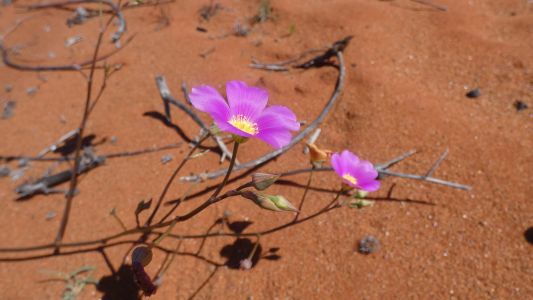 |
|
A last look at a few flowers in the sand. WA is well
known for flowers, but we really haven't taken much interest and have no
idea what to expect. |
| | | |
 |
|
An easy drive to Carnarvon. Finding higher speed a bit
unsettling. |
| | | |
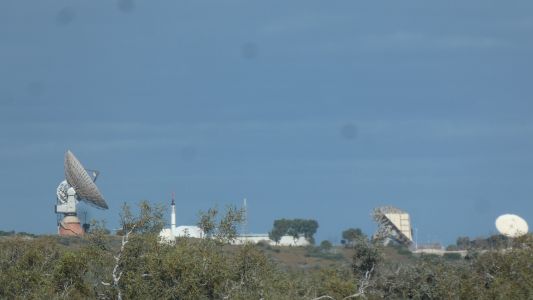 |
|
The tracking station at Carnarvon, once employed during
NASA moon expeditions, is being renovated after years of no use. |
| | | |
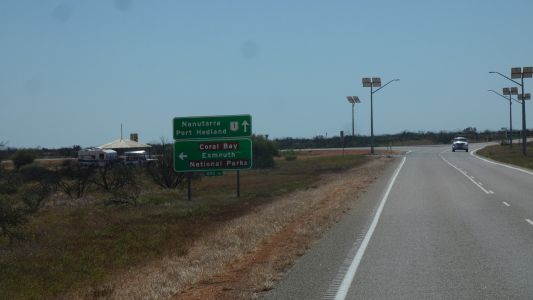 |
|
We drive into Carnarvon for food, fuel, water, and empty
the loo. Then back to this junction and head north. |
| | | |
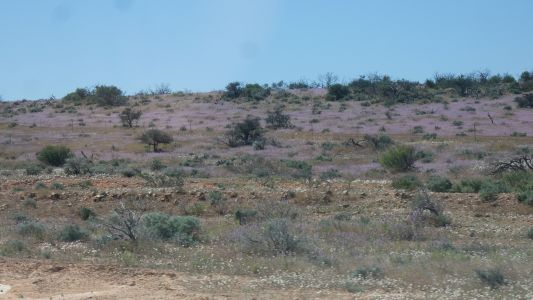 |
|
Beginning to see occasional carpets of flowers. |
| | | |
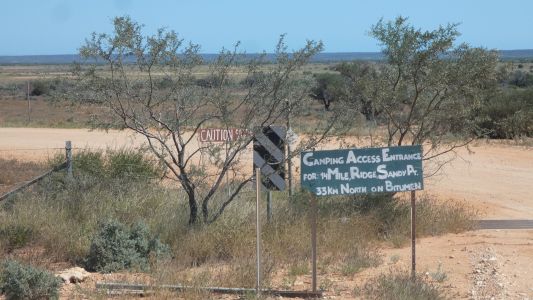 |
|
We find the entrance to Warroora Station. A string of
campsites on the coast, used to be part of the station, now managed by WA
National Parks. |
| | | |
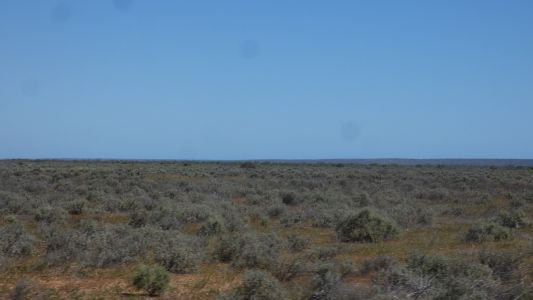 |
|
A flat plain, occasionally part lake. |
| | | |
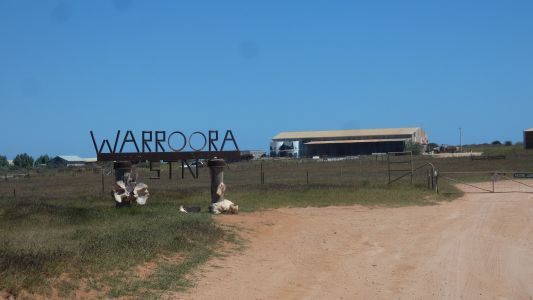 |
|
Past the station buildings. We stop to say hello, and are
given a very nice booklet about the Ningaloo Coast. |
| | | |
 |
|
The coastal dune looks a bit intimidating. High and steep. |
| | | |
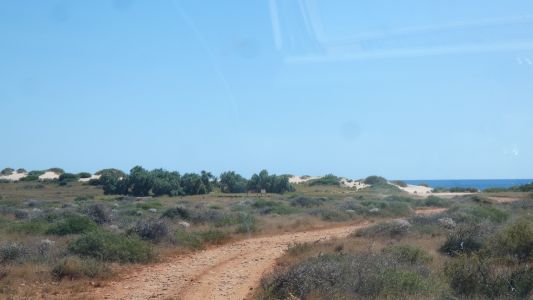 |
|
Our first view of Nick's Camp. Two sites in the trees, two
just to the right, one further to the right (our site number 5) and another
out of sight another 100m to the right. |
| | | |
 |
|
A concrete pad. Presumably Nick had a hut. |
| | | |
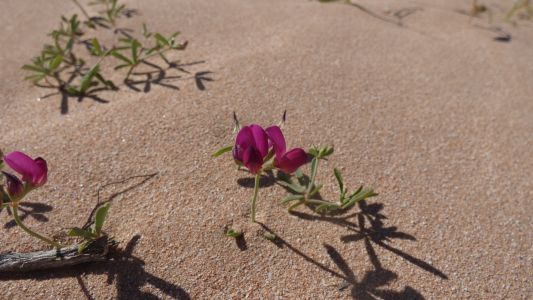 |
|
With flowers in the sand. |
| | | |
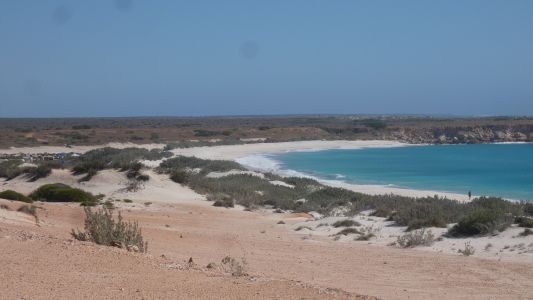 |
|
I'm writing this a couple of weeks after we left. My
recollection is we spent 8 days here. Long enough for my cold to come and
go. Helped by antibiotics to protect against worse chest infection.
We walked south along the vehicle track, to look down at the lagoon. More
camping. |
| | | |
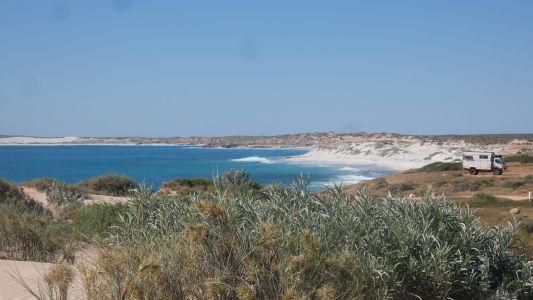 |
|
And of course on the way back look north. We seem to
avoid the soft sand of beaches for walking. Though not always. |
| | | |
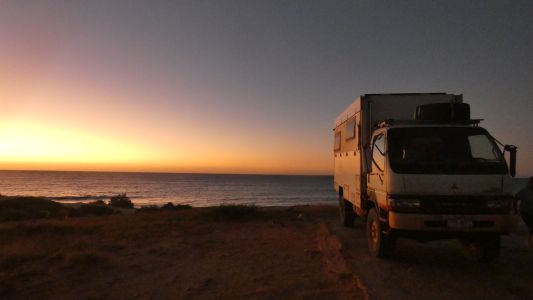 |
|
Sunset |
| | | |
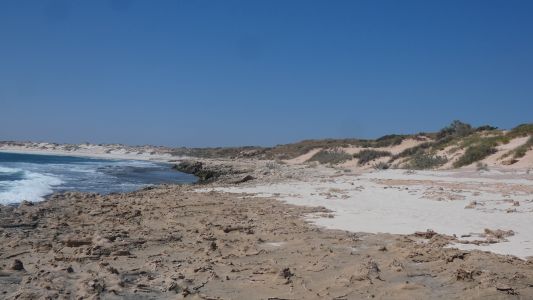 |
|
The tides are confusing. Instead of the two tides per day,
semi-diurnal, that I am used to, there is one not so big high tide and one
hardly called a high tide. I know about the Dodge Tides of Adelaide where
the water flow is inhibited. But on this long coast there is not much to
inhibit flow.
I learn there is an amphidromic point somewhere near Perth. They are
points in ocean basins where there is little or no tidal movement. Tidal
movement in the southern hemisphere is anticlockwise about these points.
Clockwise in the northern hemisphere.
I think I'm missing something though. The amphidromic point satisfies my
curiosity about the small tidal range, the height difference between low and
high. The seeming one tide per day is simply a very small difference for the
second tide.
I think .... |
| | | |
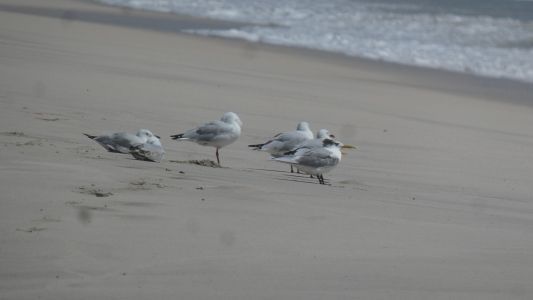 |
|
In the meantime, admire the gulls and terns on the beach.
Almost impossible to catch the terns in flight over the ocean. |
| | | |
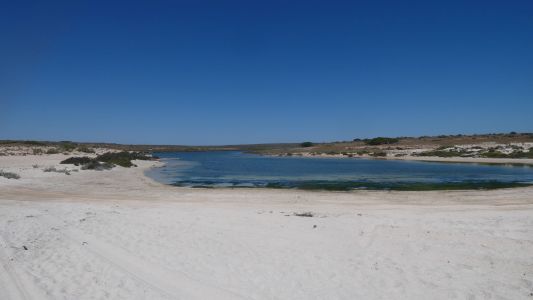 |
|
Another day, another walk. The lagoon looking inland.
Slightly salty. Not much life. |
| | | |
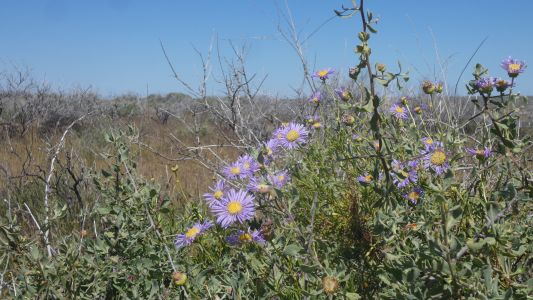 |
|
Though lots of flowers. |
| | | |
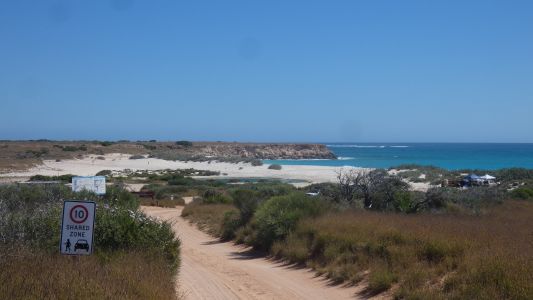 |
|
We've walked along the beach, now returning along the
track. Looking down on the lagoon area, complete with dump point and rubbish
bins to our left, and road furniture. |
| | | |
 |
|
We wonder why so many flowers, and look for what is
pollinating them. We struggle to see insects or small birds. |
| | | |
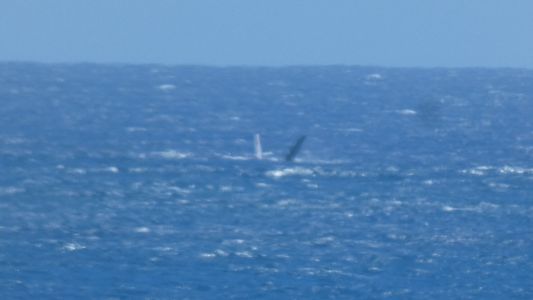 |
|
Beyond the reef, more than a couple of km away, we see
passing whales. Occasionally entertaining us with something other than
swimming their way south. |
| | | |
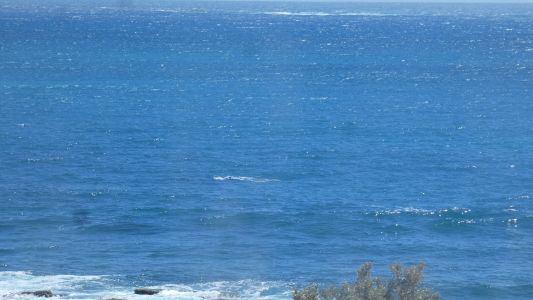 |
|
And closer to land, in the shallows, we see passing hump
backed dolphins. |
| | | |
 |
|
Mulla mulla to remind us of when we first reached the
desert west of Alice Springs. We look at plant taxonomy, family, genus,
species. Realising that the various shapes of mulla mulla are identified as
different species. And the genus is much broader than we realised. |
| | | |
 |
|
The prickly looking plant in the centre holds the dunes
together, sending out runners to expand its territory. |
| | | |
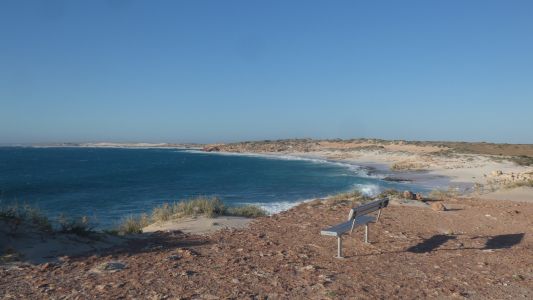 |
|
Walking northwards along the top of the cliff to Bulbarli
Well a convenient lookout. |
| | | |
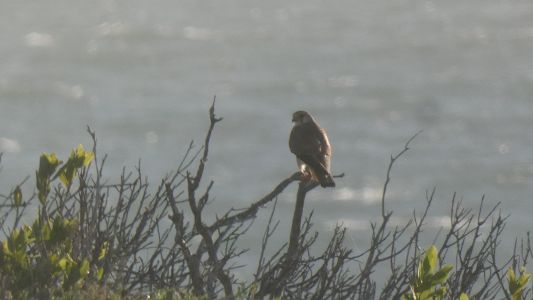 |
|
Watched by ... |
| | | |
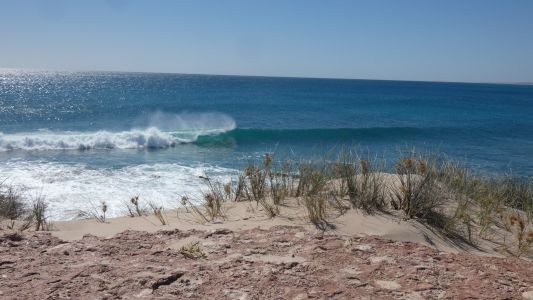 |
|
... and watching the wind, it is a constant wind not a
breeze, try in vain to send the waves back whence they came. |
| | | |
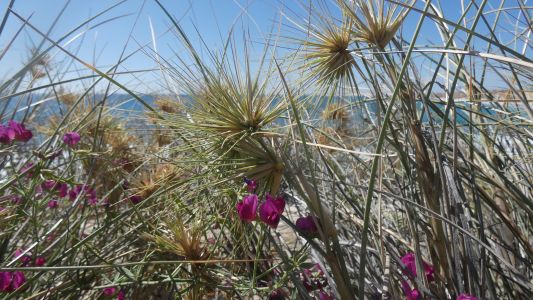 |
|
We haven't seen many red flowers. Mostly white, yellow,
blue or pink. |
| | | |
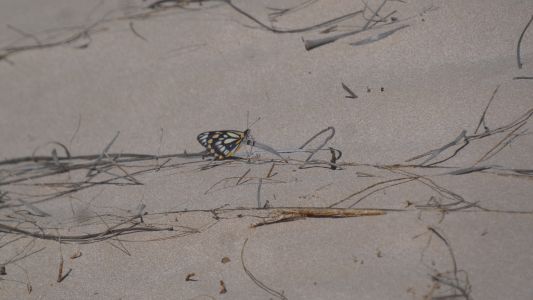 |
|
At last. A butterfly. Struggling in the wind. |
| | | |
 |
|
The windmill is no longer functional. Replaced by a
couple of solar panels and a pump. |
| | | |
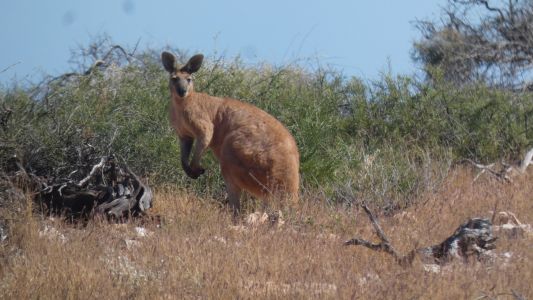 |
|
Eastern Australia has grey kangaroos. Western Australia has
red. |
| | | |
| Nick's Camp, Warroora,
Part Two |
 |
August 27 - September 3 2024 |
| | | |